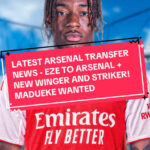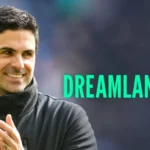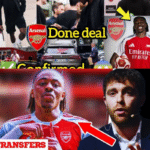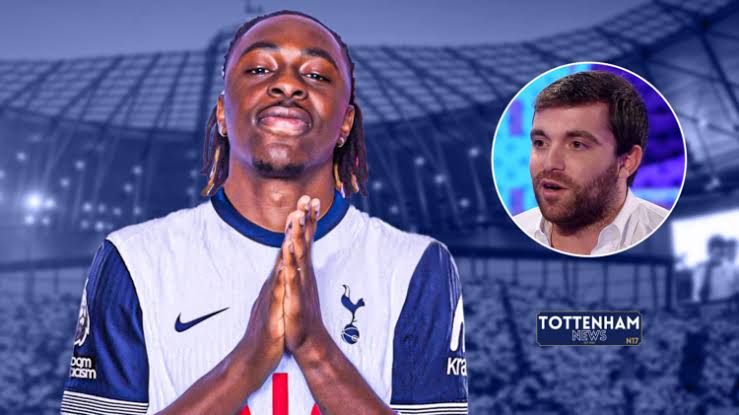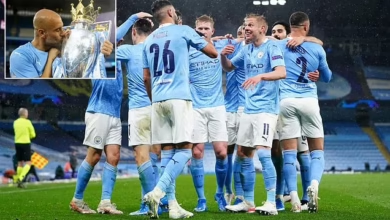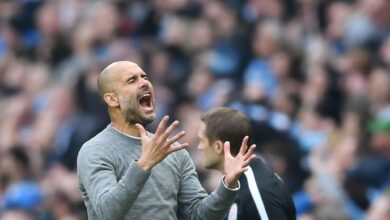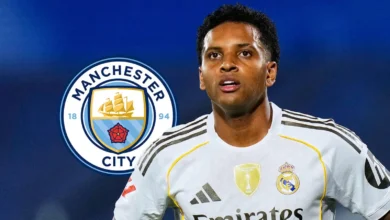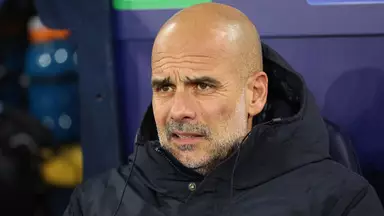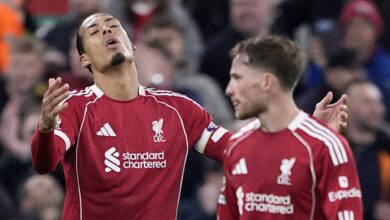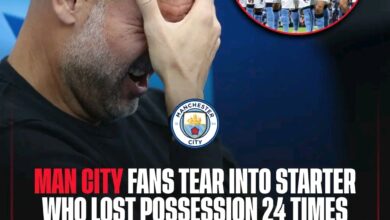Arsenal’s Pursuit of Eberechi Eze: A Complex Transfer Saga
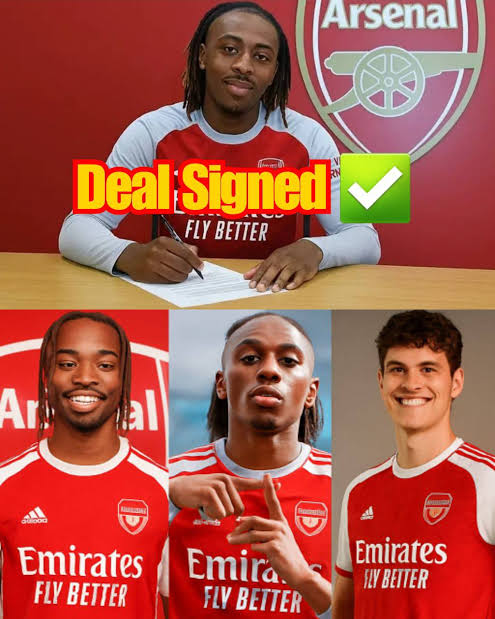
The summer transfer window f 2025 has brought with it one of the most intriguing storylines in English football: Arsenal’s determined pursuit of Crystal Palace’s star forward Eberechi Eze. What began as speculation has evolved into serious negotiations, with both clubs now locked in discussions over a deal that could reshape the landscape of the Premier League. The complexities surrounding this potential transfer reveal much about modern football economics, player ambitions, and the delicate balance of power between clubs of different statures.
At the heart of this transfer saga lies a significant financial commitment that would test Arsenal’s resources and Crystal Palace’s resolve. Eze’s release clause, set at £67.5 million including potential add-ons, represents a substantial investment for any club, even one of Arsenal’s financial standing. The structure of this deal, however, presents unique challenges that go beyond the headline figure.
Crystal Palace’s negotiating position reflects their understanding of Eze’s market value and their determination to maximize the return on their investment. The South London club has made it clear that they will not entertain offers below the release clause amount, a stance that demonstrates both their business acumen and their recognition of the player’s importance to their squad. More significantly, Palace has requested £35 million upfront, representing more than half of the initial £60 million fee, with the remainder to be paid in installments.
This payment structure reveals the modern realities of football finance, where cash flow considerations often determine the feasibility of transfers. For Arsenal, who have already committed over £200 million to six players during this transfer window, the upfront payment requirement adds another layer of complexity to their financial planning. The Gunners must now balance their desire to secure Eze’s services with their broader transfer strategy and financial sustainability requirements.
The release clause itself includes up to £7.5 million in performance-related add-ons, a common feature in modern player contracts that allows clubs to protect themselves against inflation while providing selling clubs with additional revenue based on player success. These add-ons typically relate to appearances, international caps, team achievements, and individual accolades, creating a win-win scenario where both player and selling club benefit from future success.
Eberechi Eze’s journey to this pivotal moment in his career reads like a modern football fairytale, albeit one tinged with the complexities of academy football and player development. The 27-year-old forward’s connection to Arsenal runs deeper than current transfer speculation, rooted in his formative years as a young player with dreams of professional football.
Released by Arsenal at the age of 13, Eze’s early departure from the club that now pursues him adds a compelling narrative dimension to this transfer saga. His subsequent development through various clubs, including a crucial period at Queens Park Rangers, demonstrates the unpredictable nature of player development and the sometimes flawed judgment of academy systems. The irony that Arsenal now values him at £67.5 million, having let him go for nothing as a teenager, serves as a reminder of the challenges inherent in youth development.
Eze’s progression from Arsenal academy reject to England international represents a vindication of his talent and determination. His time at QPR, where he honed his skills in the Championship before making the step up to Premier League football with Crystal Palace, showcases the importance of finding the right environment for development. The £19.5 million fee that Palace paid for his services in 2020 now appears remarkably prescient, representing excellent value for money in today’s inflated market.
The Queens Park Rangers connection adds another financial element to this transfer, with his former club set to receive 15% of any profit Palace makes on the sale. This sell-on clause, common in modern football contracts, means that QPR would benefit to the tune of approximately £7.2 million if the deal goes through at the release clause value. Such arrangements reflect the interconnected nature of the football economy, where lower-league clubs can benefit from the success of players they helped develop.
Arsenal’s interest in Eze reflects their broader strategic vision under manager Mikel Arteta and the club’s ambitious sporting project. Having invested heavily in youth and emerging talent in recent transfer windows, the potential acquisition of Eze represents a different type of signing: an established Premier League performer entering his prime years with proven quality at the highest level.
The England forward’s versatility appeals to Arteta’s tactical flexibility, with Eze capable of operating across various attacking positions. His ability to play as a traditional winger, an attacking midfielder, or even as a false nine provides Arsenal with the kind of tactical options that modern football demands. This positional flexibility has become increasingly valuable in a game where tactical systems change within matches and squads need players capable of fulfilling multiple roles.
From a sporting perspective, Eze’s addition would address several needs within Arsenal’s squad. His creativity, pace, and ability to operate in tight spaces would complement the existing attacking options while providing competition for places that could elevate the performance levels of all attacking players. His Premier League experience eliminates the adaptation period often required for foreign signings, while his age profile suggests he could provide several years of peak performance.
The financial implications of this pursuit extend beyond the immediate transfer fee. Arsenal’s strategy of moving on fringe players to fund new acquisitions demonstrates a more sustainable approach to squad building than the previous era of unchecked spending. Players like Leandro Trossard, Reiss Nelson, Albert Sambi Lokonga, Oleksandr Zinchenko, and Fábio Vieira represent significant combined value that could offset much of Eze’s cost.
For Crystal Palace, the potential departure of Eberechi Eze represents both an opportunity and a significant challenge. The financial windfall from his sale would provide substantial resources for squad investment, but losing a player of his caliber poses obvious risks to their competitive prospects. Manager Oliver Glasner’s public frustration with the club’s transfer activity highlights the delicate balance between financial opportunity and sporting ambition.
Palace’s position in these negotiations reflects their evolution from a traditional selling club to one with higher ambitions. Their determination to receive the full release clause amount, rather than accepting a discounted offer, demonstrates a confidence in their negotiating position and a recognition of Eze’s true market value. This approach suggests a club that has learned from past experiences and refuses to be pressured into accepting suboptimal deals.
The timing of Eze’s release clause expiration, reportedly before the Premier League season begins on August 16th, adds urgency to negotiations while potentially strengthening Palace’s position afterward. If the clause expires without being triggered, Palace would regain full control over any potential sale, potentially driving the price even higher given Eze’s importance to their team.
Glasner’s concerns about squad preparation reflect broader challenges facing clubs in Palace’s position. The manager’s admission that he has only 17 outfield players available, coupled with his warning about “another false start” if new signings arrive late in the window, highlights the cascading effects of major player sales. The Austrian coach’s comments about being “promised” more activity earlier in the window suggest internal tensions between sporting and commercial priorities.
The potential transfer of Eze would create ripple effects throughout the football ecosystem, demonstrating the interconnected nature of the modern transfer market. Palace’s identification of Ousmane Diomande from Sporting as a potential replacement for Marc Guéhi, who is himself linked with Liverpool, illustrates how one transfer can trigger a chain reaction of moves across multiple clubs and leagues.
The uncertainty surrounding Palace’s European status, with their appeal against Europa League demotion scheduled for resolution by August 11th, adds another variable to their transfer planning. European qualification significantly impacts a club’s financial resources and ability to attract players, potentially influencing both their willingness to sell key assets and their capacity to secure quality replacements.
For the broader transfer market, this deal would set important precedents regarding valuation and payment structures. The insistence on substantial upfront payments could influence how other clubs structure their own player sales, while the overall fee would provide a benchmark for similar players in the market. The success or failure of these negotiations could impact how clubs approach future deals involving release clauses and payment schedules.
From Eze’s perspective, the opportunity to return to Arsenal represents more than just a career move; it symbolizes a form of redemption and the completion of a personal journey. His reported enthusiasm for the transfer suggests that emotional factors may play a significant role in these negotiations, potentially providing Arsenal with an advantage over other interested parties.
The player’s development since leaving Arsenal as a teenager has been remarkable, transforming from a promising academy player into an England international and FA Cup winner. His crucial goal in Crystal Palace’s FA Cup final victory over Manchester City demonstrated his ability to perform in the biggest moments, a quality that would be invaluable to Arsenal’s ambitions in multiple competitions.
At 27, Eze finds himself at the perfect age for such a move. He possesses the experience and maturity to handle the pressure of playing for a club with Arsenal’s expectations while still having several peak years ahead of him. This timing could prove crucial in negotiations, as Palace cannot reasonably expect his value to increase significantly beyond this point, while Arsenal can anticipate several seasons of prime performance.
This transfer saga occurs against the backdrop of evolving financial regulations in football, including the Premier League’s Profit and Sustainability Rules and UEFA’s Financial Fair Play regulations. These frameworks increasingly influence how clubs approach the transfer market, requiring more strategic thinking about squad investment and financial sustainability.
Arsenal’s approach of balancing incoming transfers with player sales reflects this new reality, where even wealthy clubs must demonstrate financial prudence. The potential departure of several fringe players to fund Eze’s acquisition represents a more sustainable model than the previous era of unlimited spending by the game’s elite clubs.
For Crystal Palace, the substantial fee for Eze would provide resources for significant squad investment while potentially improving their financial position relative to sustainability regulations. However, the challenge lies in reinvesting these funds effectively to maintain their competitive level without the player who has been central to their recent success.
The integration of Eze into Arsenal’s tactical system would require careful consideration from Arteta and his coaching staff. The player’s preferred positions and playing style would need to complement the existing squad while potentially requiring adjustments to established patterns of play. His creativity and dribbling ability could add a new dimension to Arsenal’s attack, providing the kind of individual brilliance that can unlock stubborn defenses.
For Palace, losing Eze would necessitate significant tactical adjustments. Glasner’s system has been built around maximizing the England international’s talents, and finding adequate replacement options within their budget constraints poses a considerable challenge. The potential acquisition of players like Bilal El Khannouss from Leicester suggests Palace are already planning for life after Eze, but replicating his impact will be difficult.
The pursuit of Eberechi Eze represents more than just another high-profile transfer; it embodies the complexities, ambitions, and realities of modern football. For Arsenal, securing his signature would represent a statement of intent and a significant addition to their quest for sustained success. For Crystal Palace, his potential departure marks a crossroads between financial opportunity and sporting ambition.
The negotiations surrounding this transfer highlight the evolving dynamics of player trading, where release clauses, payment structures, and sell-on fees create intricate financial arrangements that require careful navigation. The involvement of multiple stakeholders, from Queens Park Rangers’ sell-on percentage to the various Arsenal players potentially moving in the opposite direction, demonstrates the interconnected nature of the modern transfer ecosystem.
As these discussions continue, both clubs face pressure to balance competing priorities. Arsenal must weigh their desire for immediate squad improvement against long-term financial sustainability, while Palace must consider whether the substantial fee justifies losing their most influential player. The resolution of this saga will likely influence transfer strategies across the Premier League and serve as a case study in modern football negotiations. Ultimately, the Eberechi Eze transfer sto

